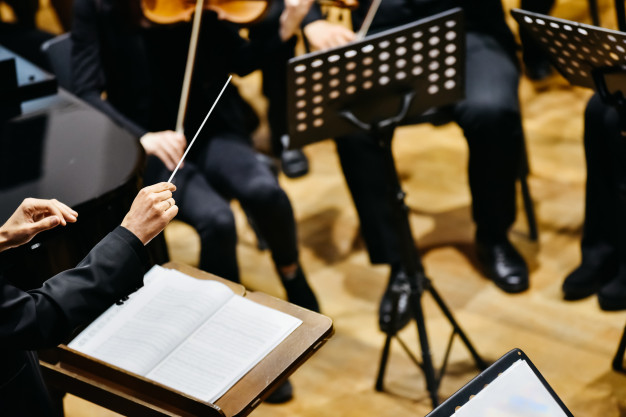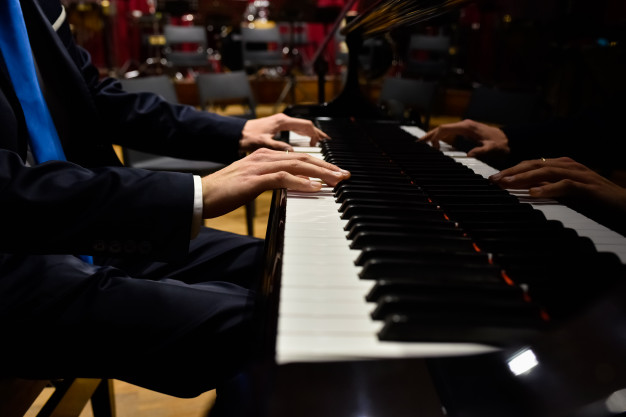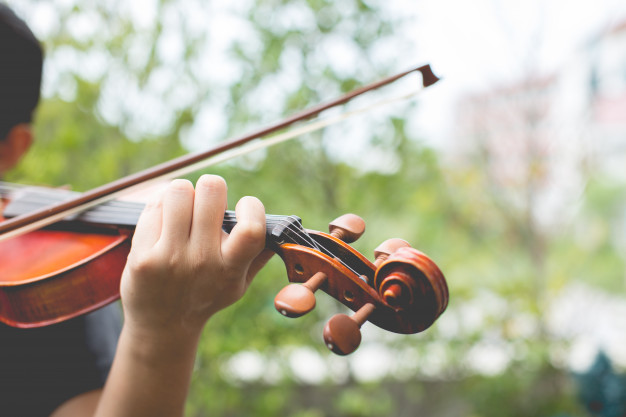Kapanlagi.com - Music is one of the arts that has many elements in it. Rhythm pattern is one of the elements of music. In fact, rhythm pattern is one of the important elements. Because, the existence of rhythm can make a music or song sound more beautiful and enjoyable.
Rhythm patterns can be found in every music or song. This shows that rhythm pattern is a very influential element in a musical work. Rhythm not only makes the song more beautiful. Rhythm can also provide atmosphere to a song. In fact, the existence of rhythm is believed to also affect other musical elements, such as harmony and melody.
Rhythm pattern is very important to be studied, especially for those of you who are interested in delving into the field of music. Therefore, you can read the review that has been summarized from various sources below.
1. Understanding Rhythm

(credit: freepik)
Before learning what rhythm is, it is important to understand the meaning of rhythm. Generally, rhythm is a pattern that emerges in a sequence. Therefore, it is important to comprehend the essence of rhythm. Rhythm is not only known in the realm of music, but also in dance.
In dance, rhythm is a series of consecutive movements that occur regularly. Meanwhile, in the Indonesian Dictionary (KBBI), specifically in the realm of music, the definition of the word rhythm is the flow that occurs due to repetition and alternation of sound units in long and short sounds, strong and soft pressure, and high and low pitch.
Rhythm is often interpreted as the pattern of melody and harmony created in a musical composition. That is why rhythm is an important and fundamental element in the art of music. The presence of rhythm in music can be felt. When enjoying a musical composition, rhythm often emerges as an element that encourages someone to sway or move their body.
2. The Function of Rhythm in Music
As mentioned earlier, rhythm patterns are an important element in music. The same goes for rhythm, in music rhythm also serves as a driver and as the foundation of composition.
There are several musical instruments classified as rhythmic instruments, including drums, percussion, bass, guitar, piano, and synthesizer. As we know, these types of musical instruments are quite dominant and can be found in almost every song or musical composition. This shows that rhythm patterns are indeed important in music.
3. Understanding Rhythm Patterns

(credit: freepik)
Meanwhile, rhythm patterns are a collection of rhythms in a song that can appear repeatedly. Indahretno Arumsari defines rhythm patterns as a group of sounds that have a certain pattern or arrangement in one or several measures, and can appear repeatedly and regularly in a melody.
In a song or musical composition, the role of rhythm patterns is to evoke atmosphere and feelings. Moreover, not only feelings, rhythm patterns are also believed to manifest responses in the form of physical movements, such as nodding the head, swaying the body, and so on.
Each song has a different rhythm pattern. That is why rhythm patterns are often used as a reference in distinguishing the genre of a music or song.
4. Types of Rhythm Patterns

(credit: freepik)
Getting to know and understanding rhythm patterns is not just about understanding them. Because, this music element has various types. As reported by liputan6.com, the types of rhythm patterns are as follows.
1. Even rhythm pattern
Even rhythm pattern is a type of rhythm pattern that has equal division (same on each beat).
2. Uneven rhythm pattern
Uneven rhythm pattern is the opposite of even rhythm pattern. This rhythm pattern has uneven or unequal division between patterns and beats.
3. Syncopated rhythm pattern
Syncopated rhythm pattern is a type of rhythm pattern that occurs when there is a strong accent shifting from a beat that should be stressed to an unstressed beat.
4. Ethnic rhythm pattern
The next type of rhythm pattern is the ethnic rhythm pattern. This type of rhythm pattern has characteristics related to the music rhythm used by a certain ethnic group, region, or nation. For example: Malay, Indian, Latin, Arab rhythms.
5. Ostinato rhythm pattern
Ostinato rhythm pattern is a type of rhythm pattern that is sung repeatedly. If the repeated pattern is more than one type, then it is called ostinati.
6. Polyrhythm
Polyrhythm is a type of simultaneous use of various rhythm patterns. This rhythm pattern then produces a combined rhythmic pattern that contains one strong beat and one weak beat.
7. Polymeric
Meanwhile, polymeric in rhythmic patterns is the use of different rhythmic patterns between one instrument and another.
That is among them a review about rhythmic patterns are important elements in music. Hopefully useful and can increase knowledge.
(kpl/psp)
Disclaimer: This translation from Bahasa Indonesia to English has been generated by Artificial Intelligence.















